Hello Mariners’ family!
I hope you’re all doing well, staying safe, and enjoying the holiday season. I’m writing again because I wanted to give you all an update on the work I started in November on Princess Carolina aka the Ronson ship.
In my last Princess Carolina blog, I discussed some of the work I’d done during my graduate internship over the last year. Well, last month I officially began as the Kress Conservation Fellow at The Mariners’. This is a grant that was awarded to the museum and allows me to pursue post-graduate work here for the next year. Thanks to this grant, I get to complete a lot more interesting research, treatments, and overall work with the Princess Carolina collection, which truly is an amazing opportunity!
Timber Work
As you all may remember, the timbers from the ship are currently unstable due to an acidification process that is breaking down the wood’s structure. One of the main components of my fellowship is researching treatment options to help stabilize this issue and prevent further deterioration. Before we could begin any of that testing though, the timbers had to be prepared for the experiment.
The first step consisted of cleaning the timbers so the treatment options we’re testing can work more readily. You can see below they can undergo a pretty radical transformation!


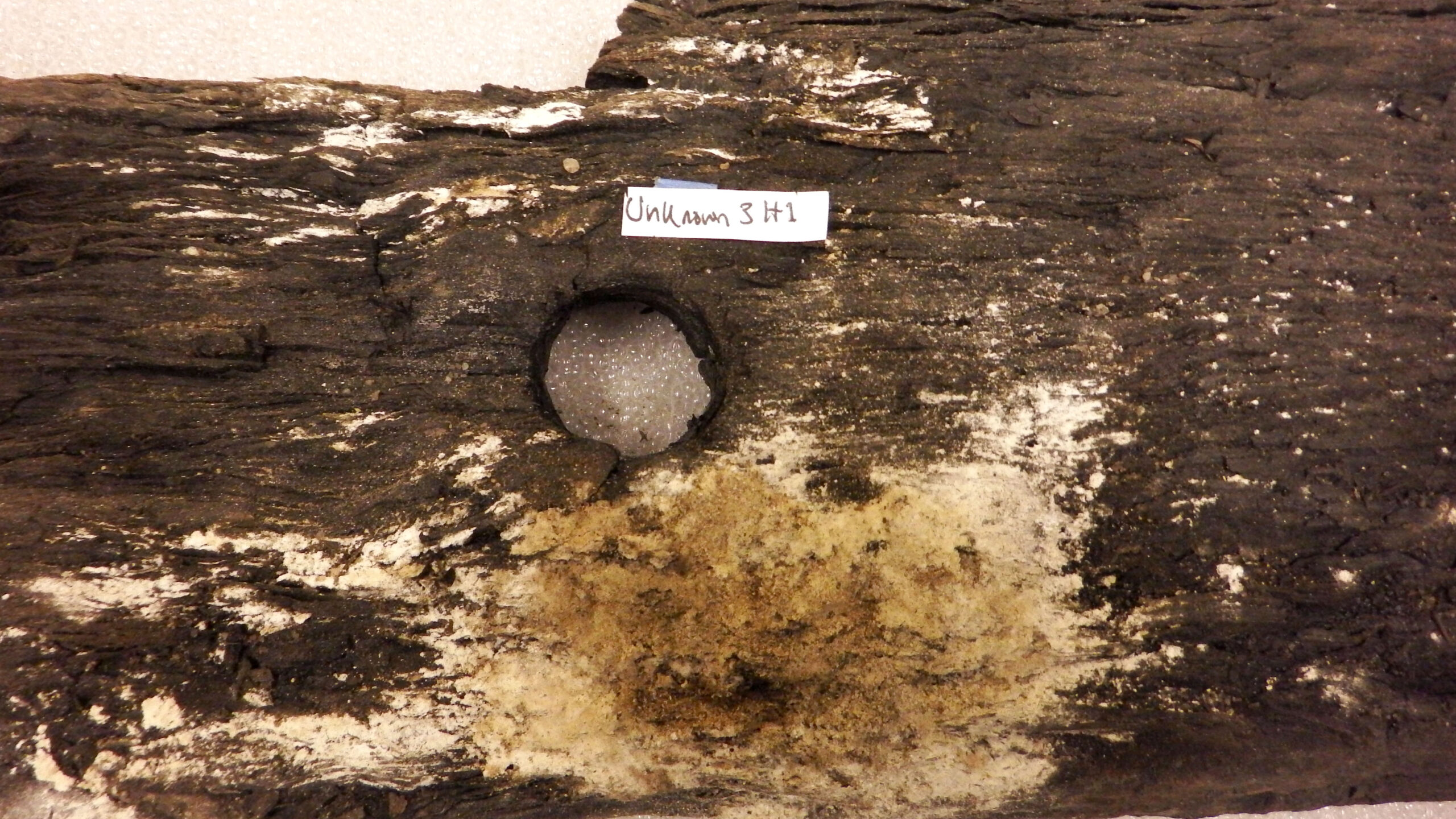
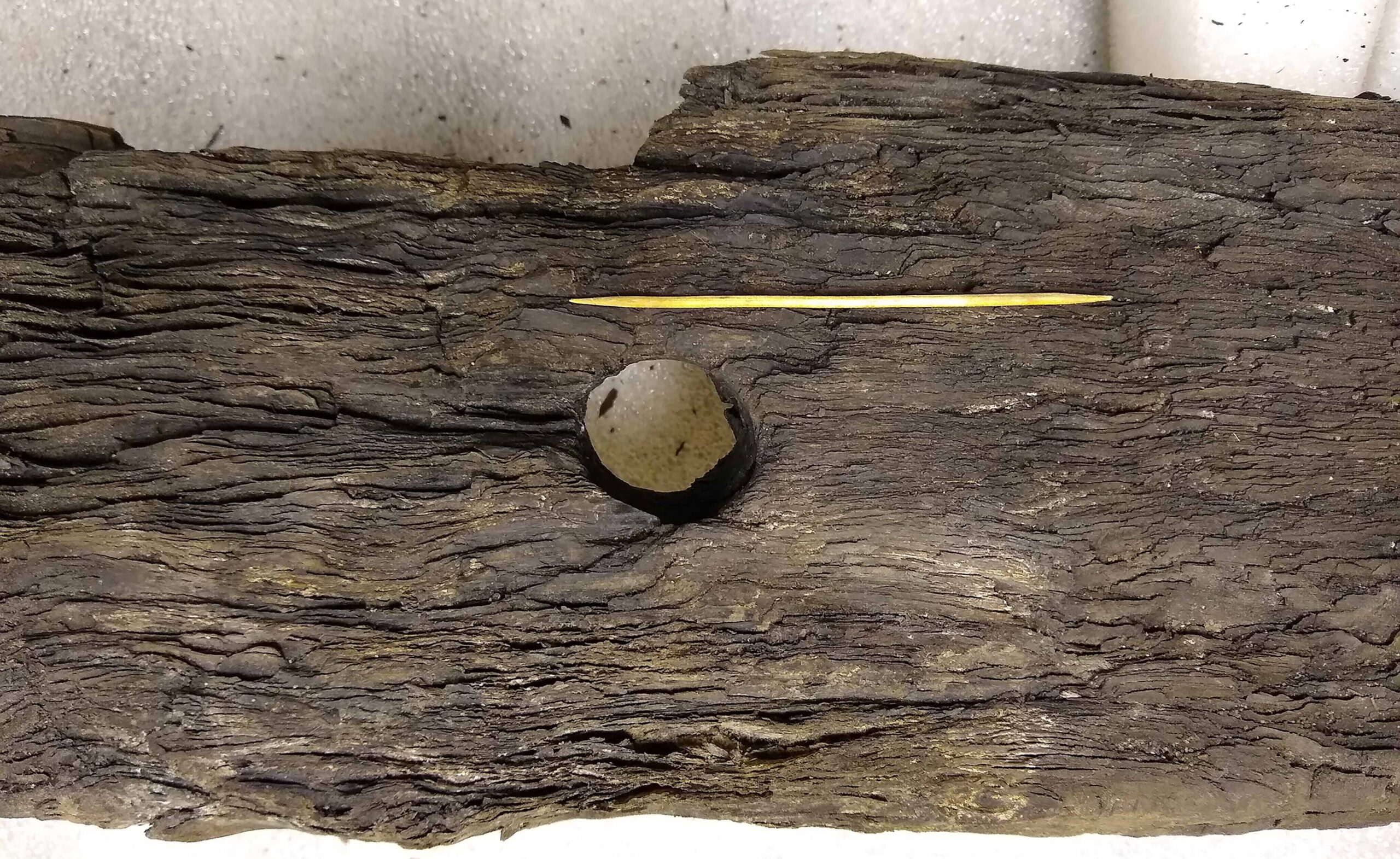
It was also crucial to identify the type of wood we’re testing before the experiment as that could affect how we interpret the results. Similar to what I did with La Isabel, I took a sample from each test timber and analyzed it under the microscope. By looking for different features, I was able to narrow the wood species down to white oak for all the timbers.
These samples were particularly fun to look at because many of the features were clearly visible. For example, a distinguishing characteristic of oaks are large rays (see below). I could identify these large bands of radial cells quite easily under the microscope in multiple views of the wood. Additionally, I could distinctly see some key cellular features such as the transition of vessel elements called “pores” from earlywood to latewood as well as smaller cell types such as parenchyma and tracheids (thinner cell walls) and fibers (thicker cell walls). Features like these help with the identification process as they vary between genera and even specific species. I must say, investigating them makes me feel a bit like a detective narrowing down the possibilities!
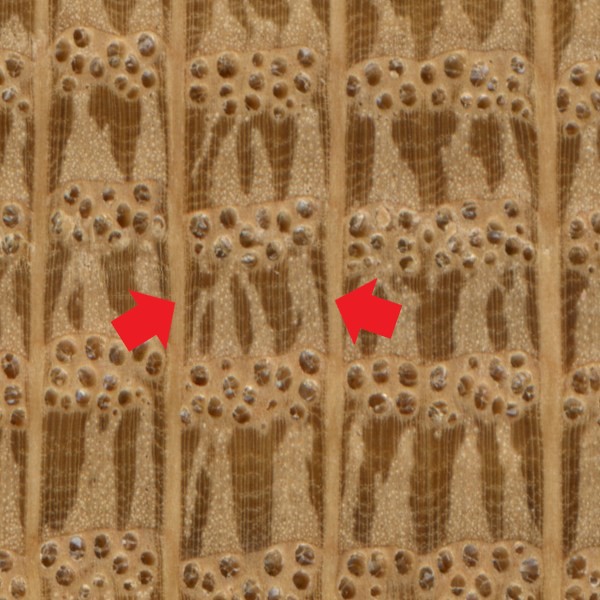
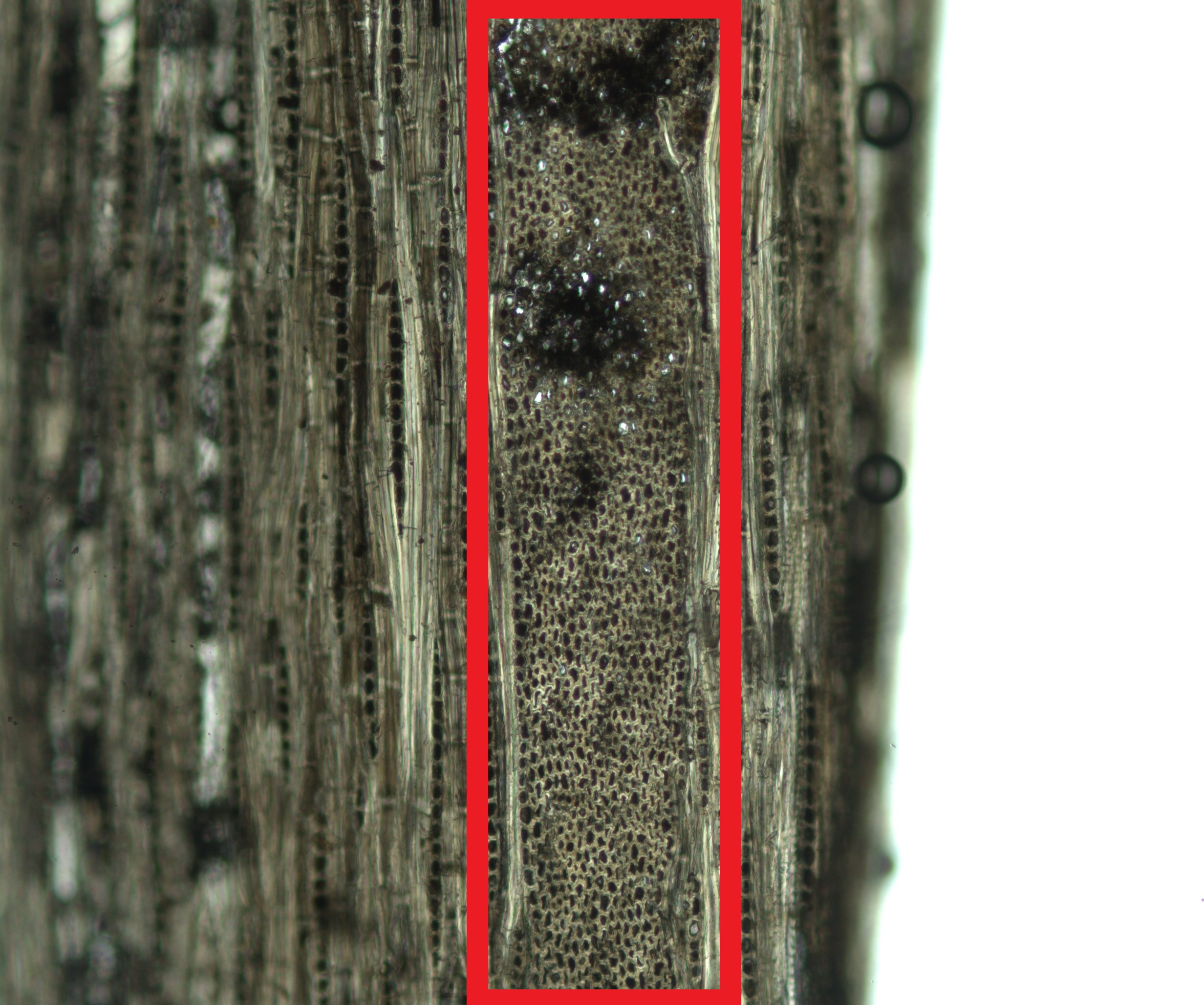
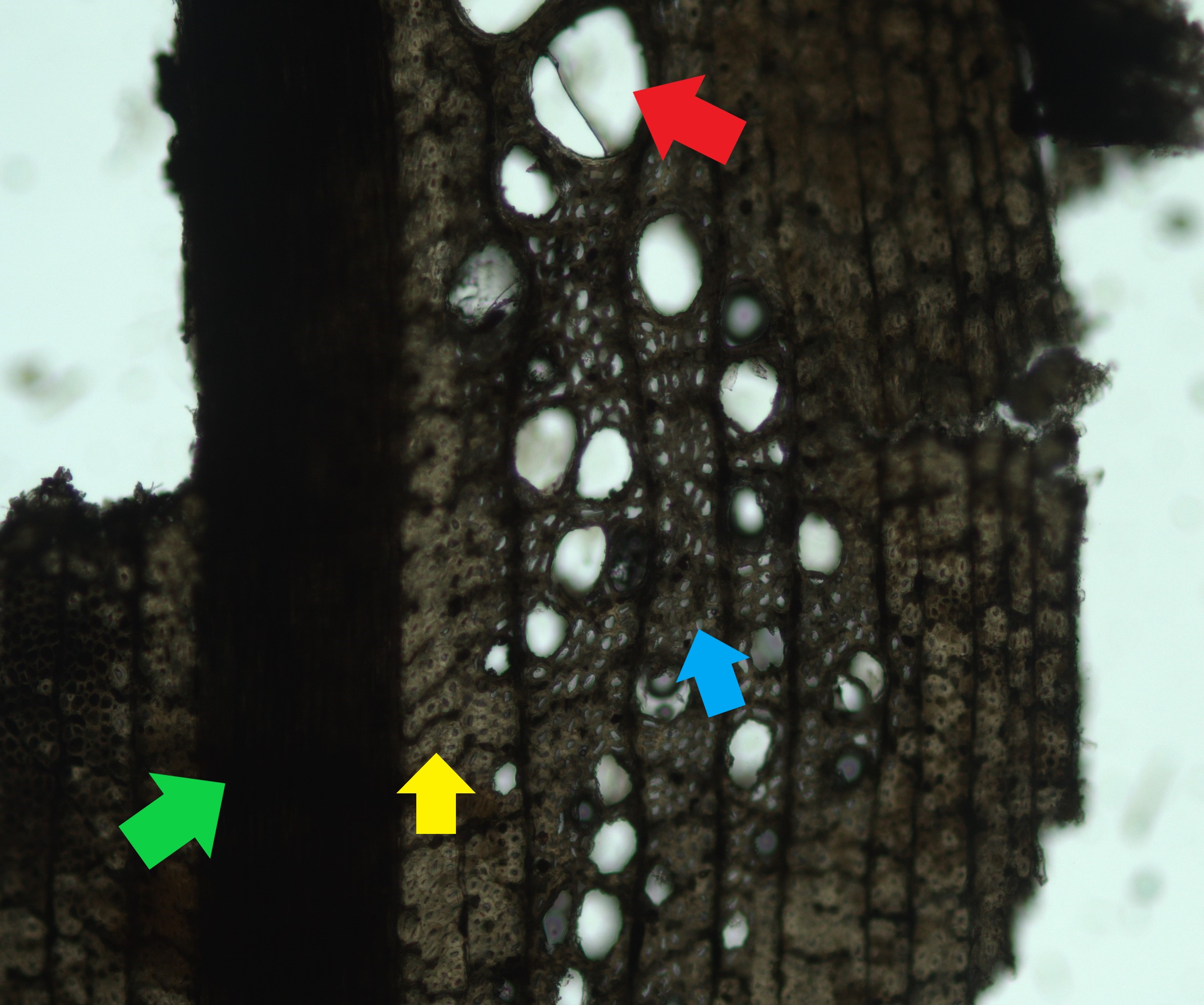
Leather Work
Another component of my fellowship involves leather artifacts recovered from the Princess Carolina as fill material. My work will include documenting, performing minor conservation treatments on (e.g. light cleaning, mending, etc.) and rehousing 500 of these leather fragments. This will not only be a great chance to expand my experience working with archaeological collections, but I’ll also get to collaborate with our very own Maritime Archaeologist, Hannah Fleming. She has some great expertise to share, particularly regarding the typology of the collection, so it will be exciting to see what we learn.
To begin, though, I’ve been working on the documentation portion of this work which includes photographing, measuring, describing, and general condition reporting. Documentation is a key facet of our work, so it’s important we ensure everything has a complete record.
So far, I’ve seen some pretty interesting leather artifacts, particularly shoe fragments of various shapes and sizes. Interestingly, there was a leather worker at the ship’s site who got rid of scraps that now we can investigate to better understand the history of this location. I’ve added some pictures below so you all can get a sneak peek of this awesome collection!
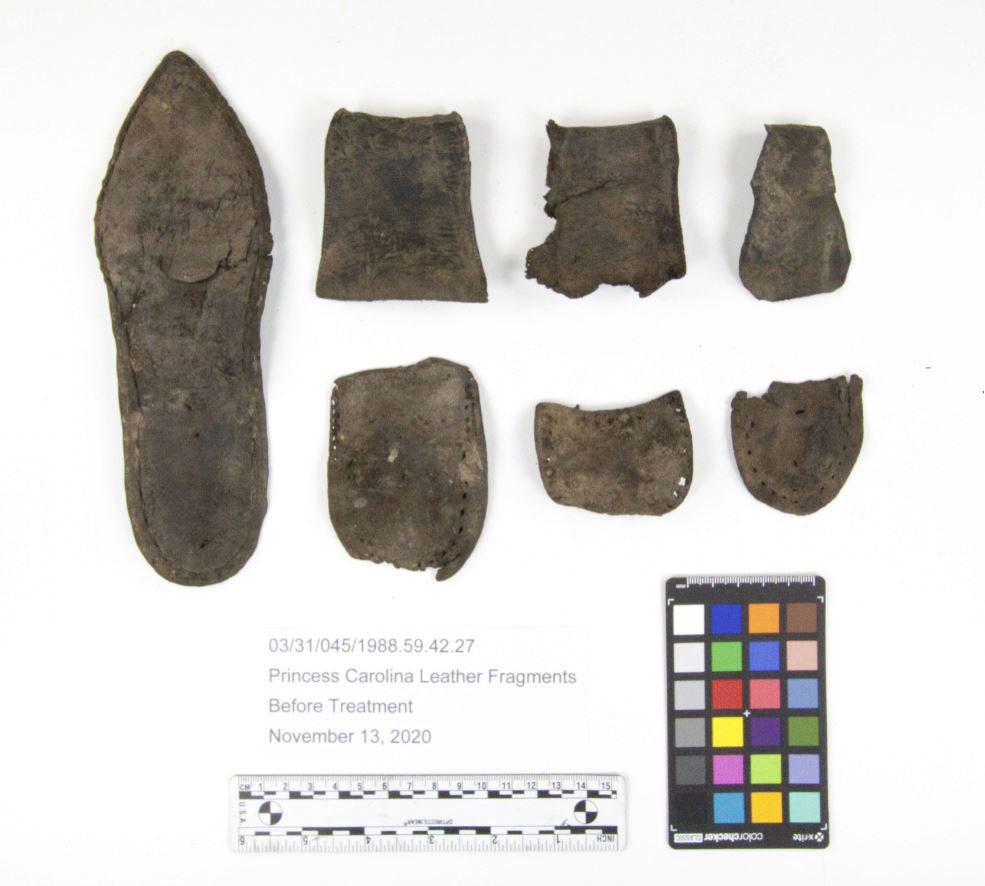
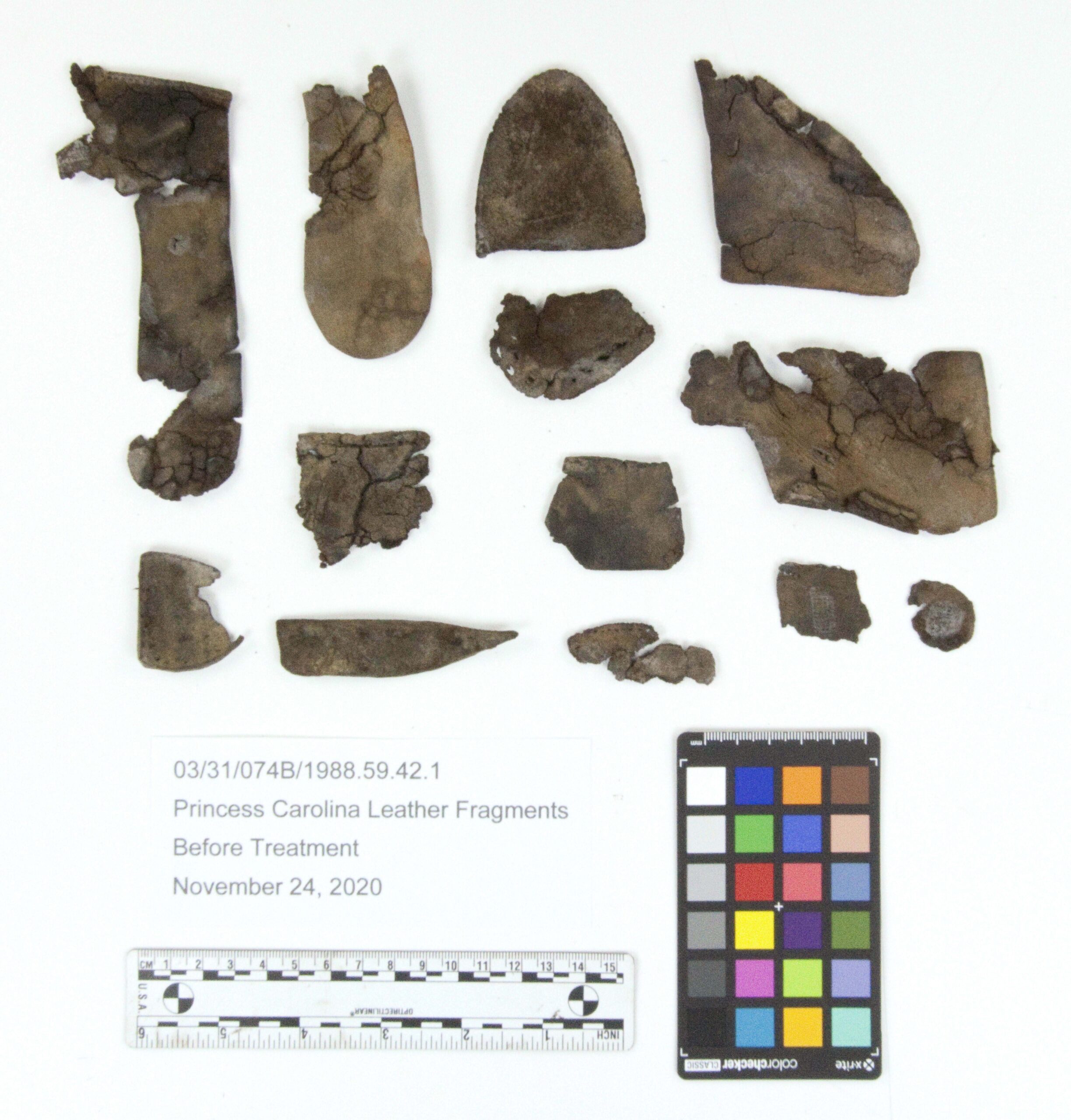
I’m excited to share with you all more of what we learn about these artifacts, but that’s about all I have for now. We definitely have some interesting stuff in the works over the next few months, though, so I’ll make sure to keep you guys updated on our progress with this project.
I hope you all have a wonderful holiday season and a happy new year!
Sources
Meier, E. White Oak. Available at https://www.wood-database.com/white-oak/ [Accessed 18 December 2020].